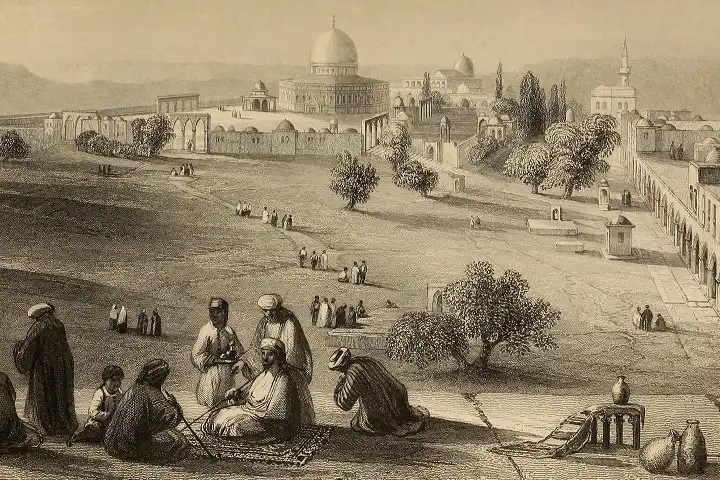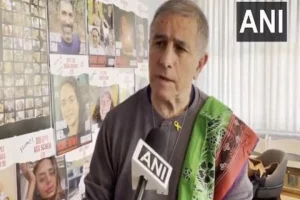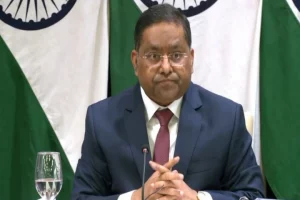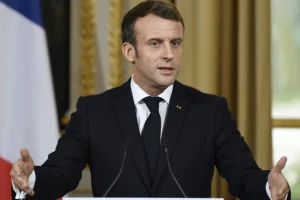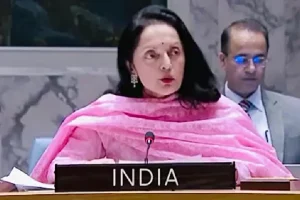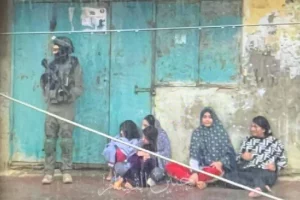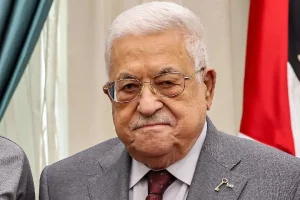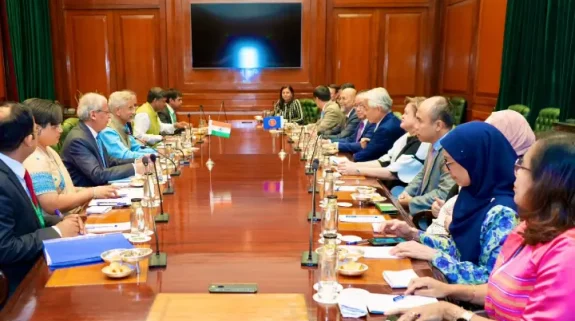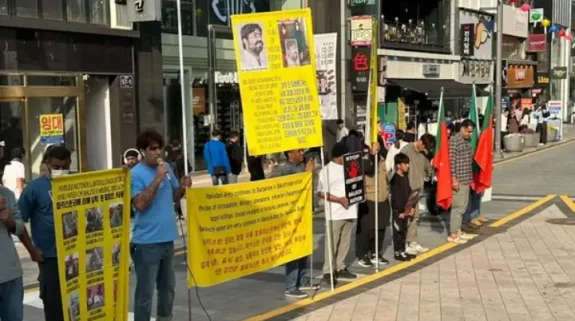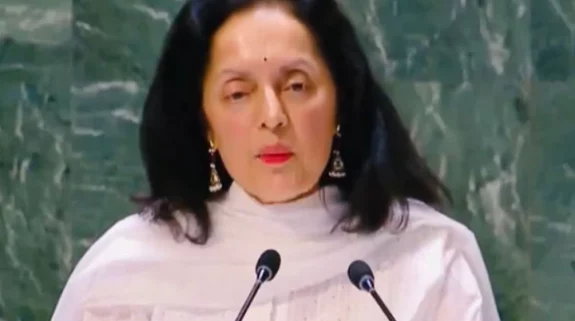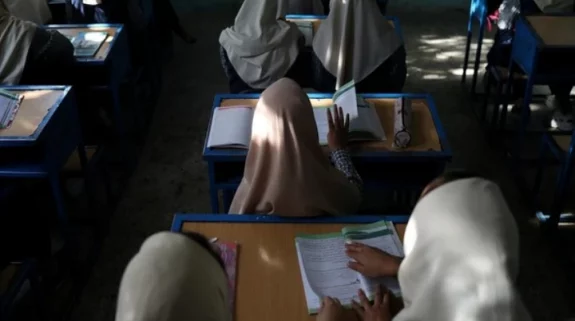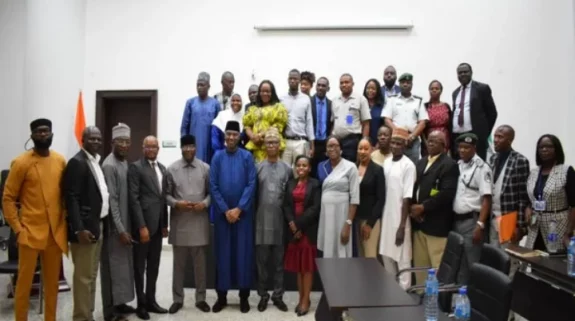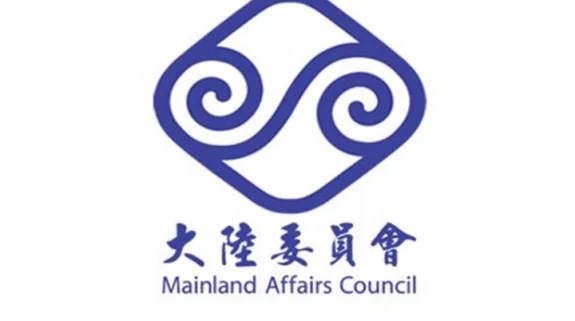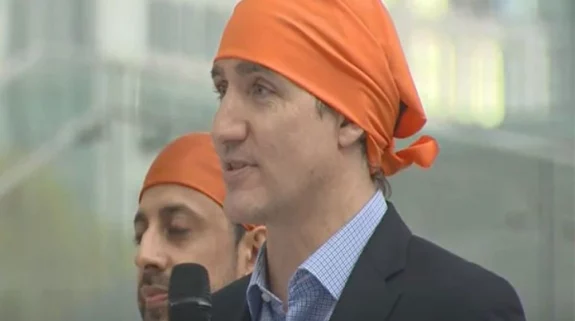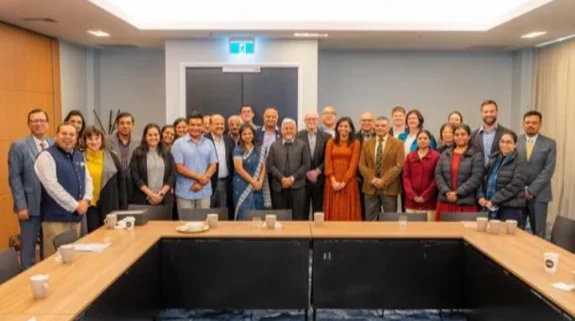As all leading world powers are reaching out to countries in the Middle East anticipating it as the post-US moment, India, for years, is silently sitting there as a soft power icon.
Take the case of an Indian hospice in East Jerusalem. More than diplomats, a medieval Indian dervish has bound two countries for centuries: Baba Farid of Ganj Shakar, who visited Jerusalem around 1200 CE and his memorial, thronged by people of all faiths, is now known as the Indian Hospice.
It flies the Indian tricolour on its top, and has been under direct supervision of an Indian representative since 1924.
The Hospice, also called Zawiya al-Hindiya or Zawiya al-Faridiya in Arabic, has been carefully renovated by the Ministry of External Affairs and extends to a whopping 7,000 sq metres. It is located only minutes away from the Al Aqsa Mosque in the Old City, or East Jerusalem.
800 Years Old Hospice In Jerusalem , Israel Where Indian Sufi Saint Baba Farid Stayed In 1200 A.D
( Photo – @BBCWorld ) pic.twitter.com/t2FBQlavL7
— indianhistorypics (@IndiaHistorypic) August 27, 2021
Chilla of a Sufi
Legend has it that 13 years after great Salahuddin Ayyubi recaptured Jerusalem, famous medieval Punjabi poet, preacher and mystic Fariduddin Masud Ganjshakar, commonly known as Baba Farid or Shaikh Farid, visited the holy city on a pilgrimage. Impressed by his piety, the governor of the city allowed him a lodge attached to a mosque at Bab al-Zahera (now known as Herod’s Gate or in Hebrew, Sha’ar Haprachim – Flowers Gate). He performed a chilla (40-meditation and secluded prayers) there and ever since this place began to be revered as a pilgrimage site. Hajis, who would visit Mecca during Hajj, took a stop in Jerusalem to pay homage at the Hospice.
Hospice of Healing
During the time of the Ottomans, the Hospice was given to the Islamic Wakf for charitable and pious purposes. In 1924, an Indian Khilafat Movement leader Nazir Hassan Ansari from Saharanpur was appointed its first Sheikh (caretaker) at the request of the Grand Mufti of Palestine. Today, his son Sheikh Munir Hassan Ansari, who was born in Jerusalem, looks after the shrine along with his son Nazeer Hussain Ansari and his wife Wafa.
Ansaris, like Palestinians, have suffered personal losses to keep the Hospice safe and a working religious site. They lost three family members when Israeli forces bombarded it during the 1967 Six Day War.
Visited the 800 year old Indian Hospice in #Jerusalem, the meditation place of our revered Sufi Saint Baba Farid. Was greeted by Sheikh Ansari & his sons, caretakers of the Hospice. Truly a memorable experience! pic.twitter.com/0zUn26GFhX
— Capt.Amarinder Singh (@capt_amarinder) October 24, 2018
For nearly a century, four generations of the Ansari family have witnessed the hatred, prejudice, violence and unrest of multiple wars and two Intifadas, yet they have ensured that this quarter of Jerusalem remains serene exactly as 13th century Sufi dreamed and continues to reverberate with Indian presence.
The Hospice has spread to six rooms from two. A portrait of Baba Farid at the entrance welcomes the guests of all faiths, and according to Israeli website Israel21c.org, most of the visitors are Muslims, Hindus and Sikhs of Indian descent.
Indian pilgrims are encouraged and recommended by India’s diplomatic missions in Tel Aviv and nearby capitals.
During World War II, the Indian Hospice was utilised as a leave camp for the soldiers of the Indian Army who served with the British troops in the Middle East. The then Armed Forces Headquarters established two wings – Delhi Wing and Travancore Wing – at the hospice for the use of leave personnel, both of which can be seen along with their keystones even today, as also an old newspaper page from The Palestine Post of May 7, 1945 bearing the headline “All Germans Surrender”.
The United Nations Relief and Works Agency for Palestine Refugees (UNRWA) runs its Jerusalem Centre from a part of the Hospice premises.
Israel21c.org reports that guests to the hospice – even diplomats and government officials — do their own cooking and laundry using supplies and equipment provided by the hostel (lodge or guest house). Ansari and his parents, wife and siblings handle everything else, from administrative duties to maintaining the six guest rooms and the small mosque, library, dining hall and kitchen.
We are not a hotel, explains Ansari: “Indians who come here seek a quiet, humble place near holy sites.”
Decoration at Mosque and Dream of Al Aqsa University
Al Aqsa Mosque also bears imprints of India’s cultural connection with Palestine. The Nizam of Hyderabad donated chandeliers to the Al Aqsa mosque, which till date adorn the Mosque. Indian Muslims contributed a significant amount of money to open the Al Aqsa Mosque University. Unfortunately the university has not been founded because the money collected for the University was used for defending Palestine in its revolution in 1936-39.
Maulana Muhammad Ali Jauhar, a prominent Congress politician and leader of Khilafat movement, also lies buried in Jerusalem, reminding that India-Palestine historical friendship lives.
#MohammedAliJauhar
A fiery orator, a forceful writer and fearless freedom fighter, Maulana Mohammed Ali Jauhar was credited with having the heart of Napoleon, the pen of McCauley and the tongue of Burke. #Thread pic.twitter.com/g5ASNvMJyO— India Muslim History Project (@syedurahman) October 15, 2021
Balance of Time and BRICS
Its lively relations with Palestine and other countries of the Middle East nevertheless, India has crafted a fine balance with Israel. It is to the extent that some believe that if Baba Farid hospice isn’t under Israeli shelling, it’s largely due to Indian influence. However, the expansion of BRICS with inclusion of four major Arab-Persian countries in the bloc is likely to change the geopolitical and geo-cultural matrix of the region.
In order to remain competitive as countries such as China and Russia are likely to expand their influence, India’s civilizational soft power of which Hospice is an emblem as is the recent landing of a spacecraft on the moon will come in handy in the new world order that is unfolding in front of our eyes.
Congratulations to @isro! #India’s #Chandrayaan3 has successfully touched down on the moon’s South Pole on Aug 23. #MoonLanding pic.twitter.com/14NXkVIlOn
— Global Times (@globaltimesnews) August 23, 2023






